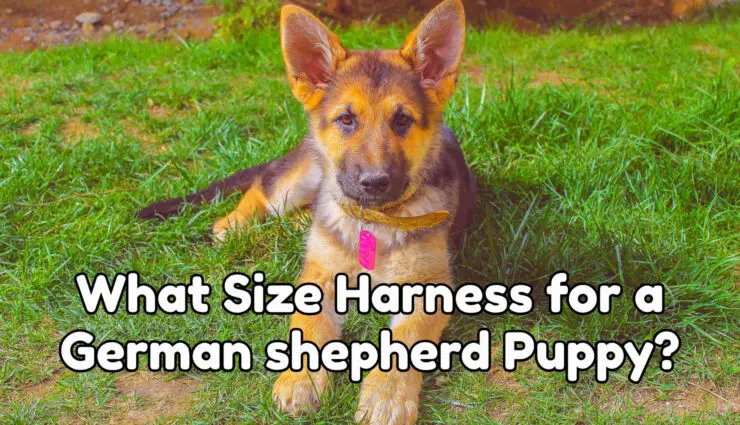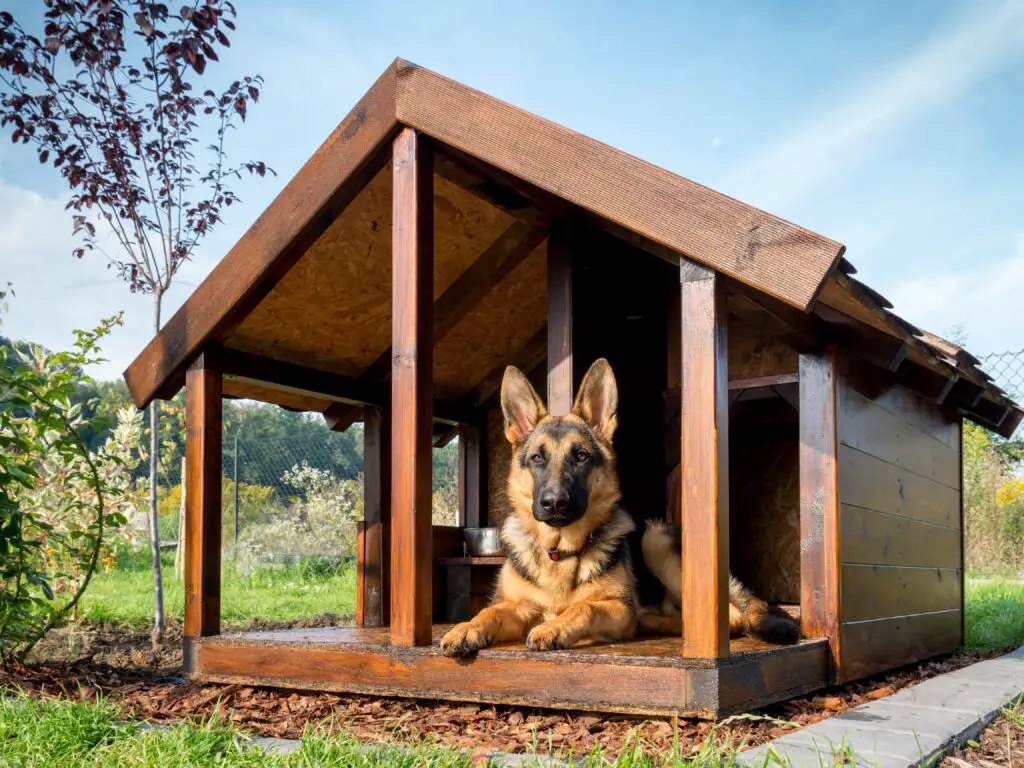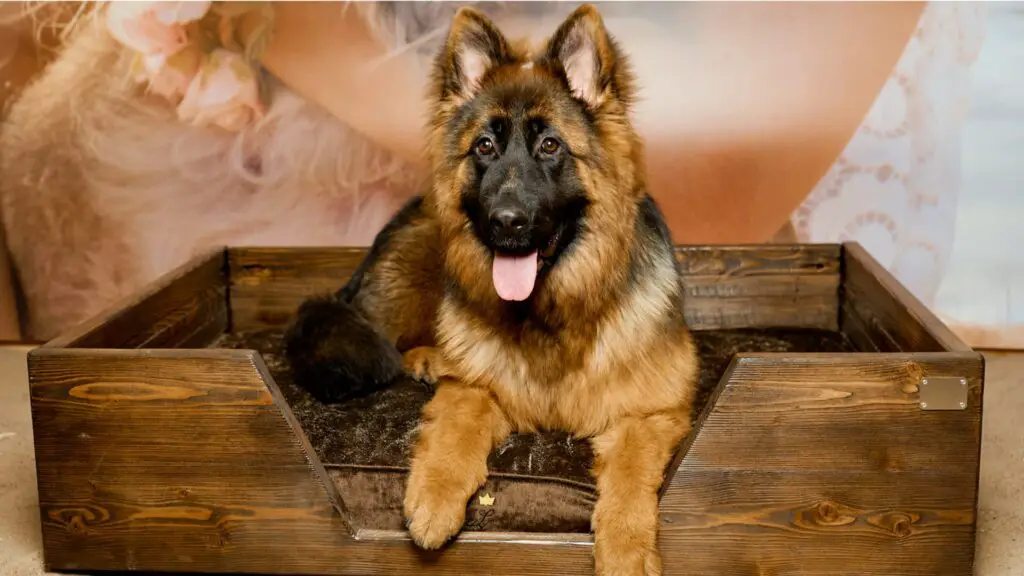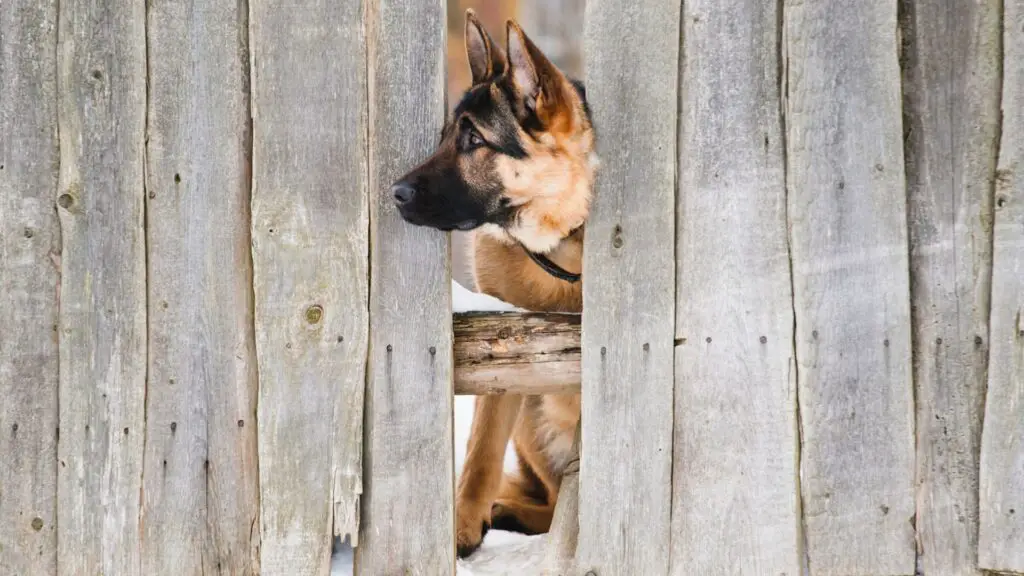A harness is handy equipment that every German shepherd owner needs to have. And so, a sturdy and durable harness is essential as you have long enjoyable hikes with this masculine dog breed.
While at that, you must teach a dog on how to be on a harness down from its puppyhood. With that, the puppy will transition into its adulthood well aware that a harness causes no harm.
Remember to have a comfortable harness that the dog will yearn to wear. Hence why it’s recommended you take the measurements of your pup’s neck and chest area.
So, what is the best size harness for a German shepherd puppy? How do you put a harness on a German shepherd puppy? Continue reading to learn more.
The Best Size Harness for a German shepherd Puppy
The best size of a harness should lie on your pup’s back without putting pressure on the neck or the backbone.
Additionally, the harness should never be loose.
Overall, there is no perfect size harness for a German shepherd puppy.
You ought to take the measurements of your dog before considering purchasing one from a pet store.
And that leads us to the next question.
How to Measure Your German shepherd Puppy for a Harness?
Consider taking your dog’s measurements of the neck and chest before deciding which harness to purchase.
First, measure the neck area. Often, you should use a tape measure and take the measurements of where the collar lies.
Afterwards, ensure the tape is not tight or loose. You should be able to put your two fingers in between. Write down the measurements you have found.
Next, measure the chest area. Consider measuring the broadest part of your puppy’s chest. Often, it’s the area slight being the armpits.
You can repeat the measurements to get an average.
You can also get someone to help you do these measurements.
With these measurements, you can visit any offline or online pet shop, and you will get a piece of advice on the best size harness for a German shepherd puppy.
Recommended Dog Harness for German Shepherd Puppies
- Ruffwear Reflective And Padded No Pull Harness (Editor’s Choice)
- Rabbitgoo Reflective And padded, No Pull Harness (Runner-Up)
- Bolux No Pull Dog Harness (Budget Friendly)
Types of Harnesses
There are various types of harnesses for a German shepherd puppy – Factor in your dog’s behavior before deciding on the best harness to use.
No-Pull Harness
Sometimes you may have a dog who is always cumbersome to handle and control during walks. When leashed, this dog will tend to pull a lot more, if he’s excited. Thus, such a dog needs to be on a no-pull dog harness.
A no pull dog harness is a handy tool that will minimize your dog’s ability to pull forward and tug hard on his lead. This harness type has a front clip leash attachment allowing you to steer your dog towards you whenever he pulls.
Additionally, most no-pull harnesses have a strap that rests on your dog’s chest area, thus spreading the pulling tension all over rather than centralizing it in one place, which can be painful for your dog.
Padded Harness
Having your dog on a padded harness is a great way of ensuring its comfortable throughout the outdoor adventures. A harness that is not padded will rub and cause much discomfort on your dog’s coat. This type of harness has an extra soft cushion built in the key areas likely to rub on your dog. These key areas are the chest, back-line, and armpits.
Another thing, these cushioned paddings help in spreading the tension anytime your dog pulls, thus making your dog extra comfortable.
Tracking Harness
For many dog trainers who are training their dogs to succeed in the tracking part of the Schutzhund trials, a tracking harness is handy equipment.
Such an accessory is built in a way it won’t block your dog when it is doing its job. Again, this harness type can be made of different materials and designs.
Reflective Harness
A reflective harness is vital for you who loves walking with the dog in low lighted places. The harness has reflective strips that help people identify the dog, especially at night.
Car Harness
This harness protects a dog from becoming airborne in case of a car accident. It functions as a safety gadget that attaches to the car seat belt.
K9 /Military Harness
Such a harness is prevalent in service dogs like hearing aid and mobility aid dogs.
Harness Styles
Out there, in your favorite pet store, you can find various harness styles. The type of leash attachment points differentiates these harnesses. Furthermore, the clips to which you can attach the harness can be made of plastic, metal, or webbings. The various harness styles you are likely to come across are front clips, back clips, and dual clip harness styles.
Let have a detailed look at each style of harness
Front Clip Harness
A front-clip harness has the leash attachment clip attached to the chest area of the harness. Such a harness with this type of leash attachment clip is a perfect fit for German shepherd dogs who love pulling a lot. Additionally, with this front clip, you, as the dog owner, get better control of your dog’s movement and direction, especially when he pulls. Whenever your dog pulls, this front clip helps, you steer the dog towards you.
Advantages of front clip harness style
- Better control of your dog because of the clip position
- Helps to train your German shepherd to walk on a leash
Disadvantages
- Your dog’s legs can get tangled in the loose leash
Back Clip Harness
This harness style is the reverse of the front clip harness. The reason being, you will find the leash attachment clip fixed on the back and not on the chest area. This back clip style of harness is suitable for leash-trained dogs and those dogs with delicate throats.
If your GSD doesn’t pull a lot, and you want to give him a bit of freedom, then the back clip style is the best alternative.
Advantages
- The leash doesn’t tangle between your dog’s legs
- Easy to put on
Disadvantages
- Gives you less control over your dog than when on a front clip harness
Dual Clip Harness
The dual clip harness possesses both features of the front clip and the back clip harness style. This harness has the leash attachment clips fixed on the front chest area and the back area. Lastly, this dual clip style harness is becoming popular among dog parents because of its versatility.
Advantages
- Easy to put on your dog
- Gives you complete control of your dog
Disadvantages
- Expensive
Features of a Quality German shepherd Puppy Harness
There are some features you should look before settling on one harness.
Durability
The durability of a German shepherd harness should be paramount. A quality harness should give you service all through the season.
Look for a harness made of thick and heavy-duty material, either nylon or leather.
The harness should be in a better position to withstand the rigorous pulling of the bearing dog.
Look for a harness that is water-resistant. A German shepherd harness that gets wet and then dries with time will not live for long. Thus, consider a harness that will utmost not absorb water.
Consider Comfort
A dog’s harness should not pinch or rub your puppy’s skin. Comfortability is of paramount, as you will use this harness often. So ensure the buckles are adjustable and they are not tearing your dog’s skin.
Also, ensure the harness has soft foam pads- that will lie on your dog’s back and enhance comfort.
Security
The reason we use a harness is its superiority over the collar. So if your German shepherd is getting escape routes of the harness, it beats the reason you need a harness.
Overall, seek for a harness that is firm and never loose to hold your dog in place.
How Do You Put a German shepherd Puppy on a Harness?
There are two ways of putting a German shepherd puppy on a harness.
Putting In an Overhead Harness
With this methodology, you fit in the harness by passing it through your dog’s head till it reaches down your dog’s shoulder area, not around the throat.
So how is it done?
First, you need the dog to stand still or sit down.
Then slide the harness on your dog’s head, allowing the narrow part to follow the wide end. Let the harness rest well on the dog’s chest and backbone. Always ensure the harness is not opposite, as it may injure your dog.
If comfortable, ensure the dogs fit on each leg hole in either side. Keep an eye on the ring that the leash should clinch on. Clip-in everything together and ensure everything is in place.
You can try pulling the harness to test whether you have fitted it perfectly.
Putting In a Step-In Dog Harness
Step-in harnesses are not complicated to put on than the overhead harnesses.
So how do you put a step in harness?
First, ensure the pup stands on all of its fours with its weight distributed all over. Next, ensure the harness lays on the ground unclipped.
After that, fit each front leg of your dog on each leg hole of the harness. Follow up by lifting each end of the harness and clip the ends together. Ensure that the harness fits and sits on the back and neck area comfortably. Check whether the harness is in place by pulling and shaking it diligently.
This methodology is perfect for nervous and head sensitive dogs.
Over and above, it depends on which methodology you find easier to implement.
How to Introduce a German shepherd Puppy to a Harness
How do you introduce a harness to a German shepherd puppy?
The process of putting and introducing a new harness on a German shepherd puppy requires moderation.
Some dogs will accept the harness by the word go, whereas others need several harness training classes.
For such dogs, approach them when they are happy and relaxed.
Be in a clutter-free area and lay the harness on the ground. Next, let the dog explore the harness without you causing a fuss out of the whole process.
If the dog is comfortable exploring the harness, congratulate and give it a treat. Next, get near the dog and diligently try fitting the harness.
You can either get someone to pet the dog as you put the harness on your dog. Give the dog a treat or a ball if he obliges to wear the harness.
Next, let the dog explore its surrounding while on the harness.
Positive reinforcement is crucial. Only reward your dog the moment wears that harness without causing trouble.
Remember, using positive reinforcement will help enforce this piece of training. Don’t reward what you don’t desire.
Next, if the dog is comfortable on the harness, you can fit a leash on it and walk in a busy park.
Let the dog walk around while you hold on the leash. If the dog passes this test, then you are in a better position. And we can say the dog has readily accepted the whole leashing process and accepted being on a harness.
Frequently Asked Questions
Here are some of the relevant questions that most German shepherd owners ask about a harness and a leash
Are Harnesses Better Than Collars?
Yes, a harness is better than a collar by far. The harness is vital in masculine dogs than a collar as it helps control a leashed dog with ease.
A harness will let you take control of your dog without having to worry on the probabilities of choking your lovely German shepherd.
Unlike the collar, a harness spreads pressure all over the dog’s back area. With that, there is less injury risk.
Consequently, you can never compare the security a harness offers over a collar. German shepherd puppies will wiggle out of a collar easily as compared to when on a harness.
Should I Use a Harness on My German shepherd Puppy?
Yes, a harness is a handy tool that will be effective for you and your dog. If your dog loves pulling the leash a lot, then consider having a harness.
A harness is more comfortable to handle and use when you are in a busy park.
Consequently, some harnesses come with collars where you can fit all your dog’s details for easier identification.
Should a German shepherd Puppy Sleep While on a Harness?
It’s not recommendable for a German shepherd to sleep while on a harness or a collar-as the dog risk getting choked or strangled.
Also, a harness is not appropriate when a dog is suffering from a respiratory disease like kennel cough. The harness may aggravate such an illness.
Should A German shepherd stay on Harness during the Day?
Yes, a dog can stay on harness during the day, however, only through supervision- consequently, if the dog is comfortable staying on the harness during the day, the better. Nevertheless, don’t let the dog sleep while wearing it.
Important Tips
- Always choose the best size harness for a German shepherd puppy.
- Use positive reinforcements when introducing a harness to your dog. Don’t force the puppy to stay on the harness.
- Get a harness that suits your dog’s behavior. If your dog pulls the leash a lot, get a front clip harness. Next, get a back clip harness if your dog is calm and doesn’t t have the leash pulling behavior.
Final Thought
If you choose the best size harness for a German shepherd puppy, you will be in the right pathway of enjoying those adventures with your dog.
Always remember to measure your dog’s girth and neck before deciding on a suitable harness for your German shepherd puppy.
With all said, is your dog always comfortable on a harness? And how did the dog react on the first day you introduced that harness? Feel free to share it in the comment box.





